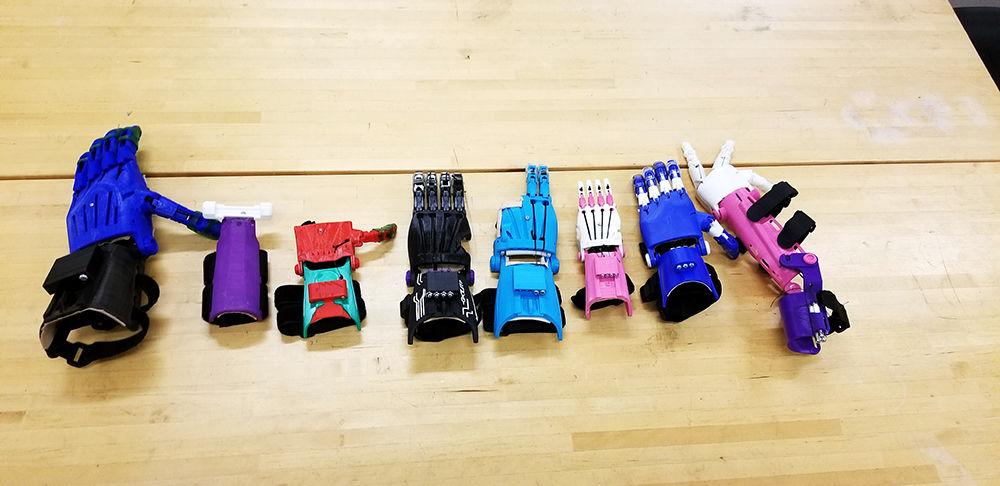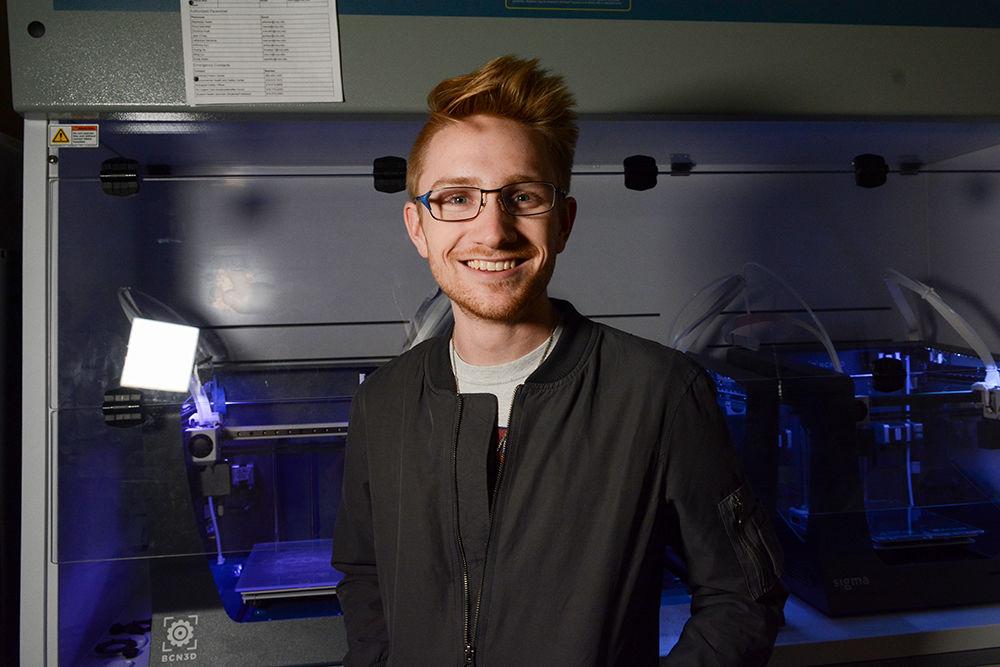In 2015, NC State students started a new chapter of the Helping Hand Project, an organization whose mission is to use 3D printing to provide recreational prosthetic devices to people with upper limb differences.
Griffin Drye, president* of the Helping Hand Project at NC State, said thus far, the Helping Hand Project has created 28 devices for 17 different people.
“Hearing that there was an organization that used 3D printing, this cool new technology that I heard about, to actually do something tangible was amazing,” Drye said.
Generally, the Helping Hand Project focuses on hands for children because, according to Drye, prosthetics can range from $10,000 to $20,000, and children grow out of these devices fairly quickly. Using 3D printing, the cost per device drops to a range of $50 to $100.
Although their main focus is hands, Drye said one of Helping Hand’s current projects is a prosthetic fin for a child who wants to learn how to swim. The child’s mother approached the organization, who had already created a hand for her son, about making a fin so that he could learn how to swim with his other hand. Drye said they are hoping to have this finished by Christmas.
“He’s only five years old, so he can’t lift a traditional prosthetic fin because it’s too heavy for him, so she was like, ‘I know this is new and nobody has ever done this before, but can you try to make a prosthetic fin for him?’” Drye said. “So we’ve been working on this one for about two semesters now.”
According to Drye, about 1,500 children are born each year in the U.S. with a limb difference, but these kids don’t really talk about it, and they may even hide it from their peers. The Helping Hand Project’s explicit goal is to provide children with prosthetic devices, but their underlying goal is to give these children a community.
Chief Technology Officer Anthony Kyu said that two ways in which they build this community are by sending the children specialized care packages and holding fun, family events such as an Easter egg hunt, in which the children can play and get to know people in similar situations.
“Around Christmas time or near the end of the semester, we also send support packages to them, so if they really like Iron Man, like we sent one kid an Iron Man action figure, and usually the team members come up with what they think their child would like the best,” Kyu said. “We order it and send the care packages along with the hand because the club’s not just about giving prosthetics, it’s about building a community.”
Kyu also said that because of the organization’s growing size and growing opportunities, he hopes that he and the team can make some internal improvements to increase productivity and make this the best experience for both the families and the participating NC State students. Kyu said this starts with making things easier for the students who’ve never worked with 3D printing or certain computer-automated software.
“The priority is to automate the design more because right now, I wouldn’t say it’s slow, but it’s a little clunky,” Kyu said. “Some groups have a hard time getting their design out, and it’s probably either that sometimes the members aren’t committed enough, usually that’s a rare case, or they just don’t have enough design experience, so without direction it’s a little confusing.”
For Drye, he hopes that he’s built something at NC State that will last beyond him. Since he only has one semester left as president, he just really wants to see the project grow.
“There’s not necessarily an end goal other than reaching as many children or people as we can,” Drye said.
Kyu and Drye both encourage interested students to reach out, come to one of their events or check out their website. Students can also join the club at the beginning of the fall semester.
*Editor’s note: Drye’s role within the Helping Hand Project has been corrected.
Griffin Drye, a senior in material science and the president of the Helping Hand Project, poses for a portrait in front of the Helping Hand's 3-D printers in Engineering Building III on Thursday, Nov. 21, 2019. The Helping Hand Project designs and prints prosthetic hands which are then given free of charge. They have a focus on young children, who need replacements as they grow.









